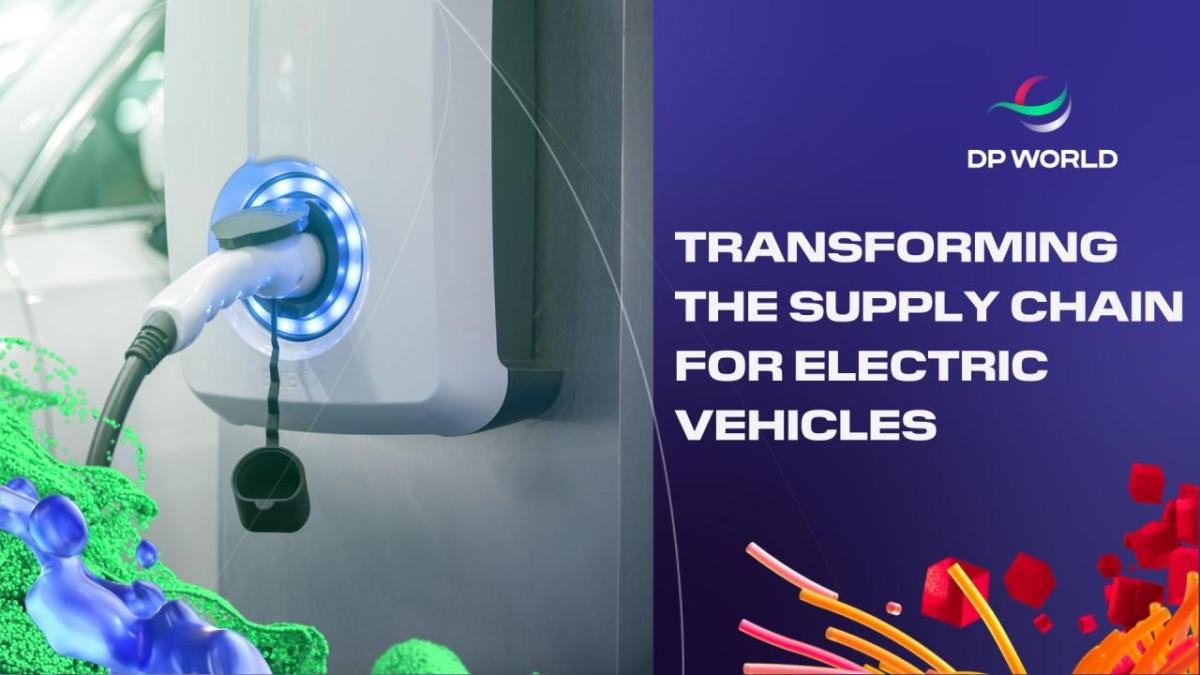Powering the Future: Transforming the Supply Chain for Electric Vehicles
The shift to EVs is driving new logistics strategies in global supply chains: how can manufacturing supply chains adapt?

The global shift towards electric vehicles (EVs) is driven by the urgent need to reduce carbon emissions and transition to a more sustainable transportation system. However, this shift is also creating significant challenges for the manufacturing sector, particularly in the supply chain.
Traditional supply chains, built to support internal combustion engine (ICE) vehicles, must now adapt to the unique requirements of EV production, which involves different components, fewer parts, and new logistical considerations.
As a result, supply chains are undergoing a fundamental transformation, a topic explored in detail by DP World and Canary Media in their joint report, Navigating the Opportunities and Challenges of an Electric Vehicle-Centric Manufacturing Supply Chain.
The report offers valuable insights into the complexities and opportunities that EVs present for manufacturers, logistics providers, and other supply chain stakeholders, highlighting key areas such as battery supply, factory logistics, and the circular economy.
Here are four key areas that require attention as the industry adapts to EV production:
1. The EV Battery Supply Chain
Batteries are at the heart of electric vehicles, making them the most expensive and crucial component. As a result, the battery supply chain is a central focus for manufacturers. Due to the high cost and complexity of battery production, there is increasing pressure to locate battery manufacturing facilities close to EV assembly lines. This proximity helps minimize transportation costs and ensures that batteries, which are heavy and require specialized handling, can be safely and efficiently integrated into the supply chain.
The report highlights the need for factories to adapt their infrastructure and logistics to accommodate these specialized components. Batteries also pose unique challenges for storage and transportation due to their size, weight, and safety requirements, which must be addressed to ensure the smooth functioning of EV supply chains.
2. Factory Floor Logistics
The transition to electric vehicles requires significant changes to the factory floor. Traditional ICE vehicles involve a complex assembly process with numerous parts, but EVs are simpler by comparison, with fewer components and moving parts. This shift is pushing manufacturers to reconfigure their facilities to handle EV-specific production needs, including equipment for handling heavy batteries and retooling assembly lines.
The logistical changes don’t stop there. EV production demands new approaches to storage, transport, and delivery. Fleets responsible for moving EVs from factory to dealership or customer must adapt to the unique challenges posed by these vehicles, including battery safety concerns during transportation. These adjustments are crucial to ensuring the supply chain remains both efficient and safe.
3. Lower Maintenance Demands of EVs
Electric vehicles also differ from traditional cars in terms of maintenance requirements. EVs have fewer moving parts than ICE vehicles, resulting in lower maintenance needs over their lifetime. This reduction in parts and maintenance complexity is driving a shift towards more streamlined supply chains, where fewer components need to be sourced, stored, and transported.
For logistics providers, this translates into a more efficient system that can reduce operational costs while still meeting the growing demand for EVs. However, it also means that traditional supply chains, which were built to handle the myriad components of ICE vehicles, must adapt to the new reality of EV logistics.
4. Integrating Circular Economy Principles
One of the most significant opportunities presented by the rise of electric vehicles is the potential to integrate circular economy principles into the supply chain. The report underscores the importance of reusing and recycling critical materials, especially those needed for EV batteries, such as lithium, cobalt, and nickel. By repurposing these materials for new batteries, manufacturers can reduce their reliance on imported minerals, lower costs, and minimize the geopolitical risks associated with sourcing raw materials.
This approach not only enhances the sustainability of the EV supply chain but also aligns with broader global efforts to reduce waste and promote resource efficiency. The ability to recycle and reuse battery components can have a profound impact on the supply chain’s resilience and its environmental footprint.
As the automotive industry evolves, the successful navigation of the EV supply chain will hinge on investments in new infrastructure, innovations in logistics, and a commitment to sustainability through circular economy models. Manufacturers and logistics providers who can adapt to these changes will be well-positioned to thrive in the EV era.
For a deeper dive into the challenges and opportunities ahead, download the full report – Navigating the Opportunities and Challenges of an Electric Vehicle-Centric Manufacturing Supply Chain – available now on the DP World website.

